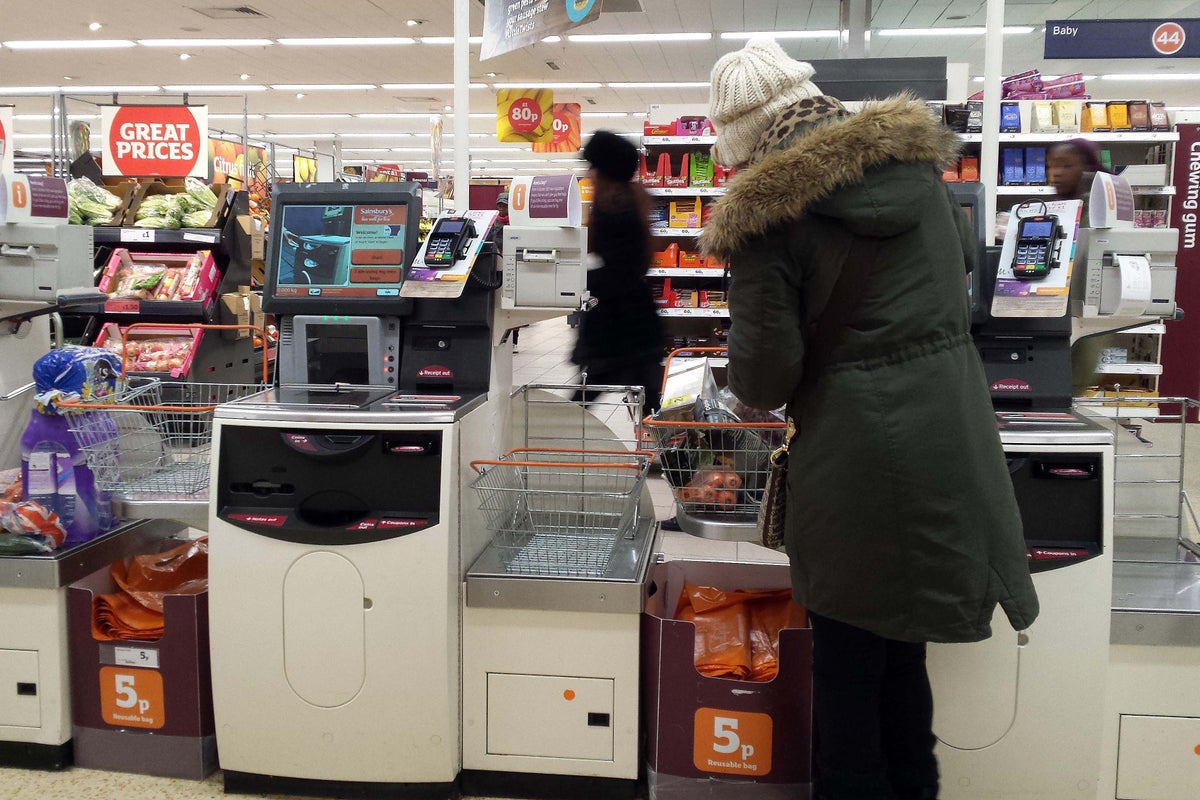
Which? has called on supermarkets to sign up to a 10-point plan to help customers through the cost-of-living crisis as it named the 50 areas where people are most likely to struggle to access affordable food.
The consumer group said supermarkets needed to “do more” to help customers by ensuring shelf prices are easy to understand, making healthy budget lines widely available and providing targeted promotions to support people in areas that are struggling the most.
Factors such as low income, poor access to affordable food, having no large supermarkets nearby and a lack of online shopping deliveries contributed to making it difficult for people to find healthy and affordable food, the watchdog warned.
It has drawn up a ‘Priority Places for Food Index’ with Leeds University ranking local areas according to the likelihood of people needing support to access affordable and healthy food.
The supermarkets have the ability to take action and make a real difference to communities all around the UK. That’s why we’re calling on them to ensure everyone has easy access to budget food ranges that enable healthy choices, can easily compare the price of products to get the best value and that promotions are targeted at supporting people most in need— Sue Davies, Which? head of food policy
According to the index, England’s North East is the worst impacted, with 45% of local areas “in dire need of extra support” due to a tendency to have relatively poor access to online shopping deliveries, a poorer than average proximity to supermarkets and higher need for family food support such as food banks, eligibility of free school meals and take up of healthy start vouchers.
Yorkshire and the Humber, the West Midlands and the North West all have about a third of local areas in the region especially in need of extra help, according to Which?
Constituencies in Birmingham and Liverpool feature heavily at the top of the index, with 100% of Birmingham Hodge Hill local areas in need of extra support.
Which? found the area has poor online delivery access, high levels of fuel poverty and people in the area having a low income or no car access, with a volunteer at a local food bank reporting that there was no supermarket within two miles.
Knowsley in Merseyside is the second highest-ranking constituency for needing support, according to Which? analysis, with low income, fuel poverty and an “exceptionally high need” for family food support in 96% of its local areas.
It also has half the number of large or very large supermarkets compared to the national average, indicating affordable food may be harder to find locally.
The index suggests that overall, seven in 10 UK Parliamentary constituencies have at least one area in need of urgent help accessing affordable food – but there are 16 constituencies across England and Wales for which at least three-quarters of the constituency are at risk.
In Wales, Which? found the Valleys had the highest concentration of areas at high risk during the food crisis, where proximity to a large supermarket or access to online deliveries may be very poor. Wales also had a higher proportion than England and Scotland of rural areas where accessing affordable food was an issue.
In Scotland, the places in highest need of support were in the Central Belt, according to the index, but there was also a notable concentration in and around Dundee, where there was relatively poor access to online food deliveries and people were more likely to be suffering from fuel poverty and on a low income.
Northern Ireland had the most even geographical spread of areas in need of support accessing affordable food. However, there was a noticeably greater concentration in parts of south west Belfast and in and around Derry/Londonderry.
With so many people in the UK already suffering from food insecurity and the cost-of-living crisis making that much worse, we need to do all that we can to support those most in need to access affordable, healthy and sustainable foods— Michelle Morris, University of Leeds
Sue Davies, Which? head of food policy, said: “We know that millions of people are skipping meals through the worst cost-of-living crisis in decades but our new research tells us where around the UK support is most urgently needed.
“The supermarkets have the ability to take action and make a real difference to communities all around the UK. That’s why we’re calling on them to ensure everyone has easy access to budget food ranges that enable healthy choices, can easily compare the price of products to get the best value and that promotions are targeted at supporting people most in need.”
Michelle Morris, associate professor of nutrition and lifestyle analytics at the University of Leeds, said: “With so many people in the UK already suffering from food insecurity and the cost-of-living crisis making that much worse, we need to do all that we can to support those most in need to access affordable, healthy and sustainable foods.
“That is why we have developed the Priority Places for Food Index in collaboration with Which? Our interactive map makes it easy to identify neighbourhoods most in need of support and highlights the main reasons that they need this support, recognising that one size does not fit all, and that tailored help is required.”







